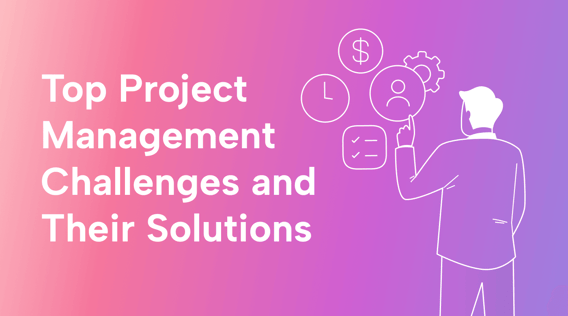Effective project management has now become a top priority for most companies. However, business owners deal with many uncertainties, macro issues, and complex challenges that all threaten to compromise the success of any project.
Very few projects, if any, run smoothly from start to end. Challenges can lead to delays, budget wastage, and even total project failure.
While project management challenges are inevitable, you shouldn't bury your head in the sand and hope for the best. Strive to understand some of the top challenges you’re likely to face and possible solutions to them.
This will help you be more proactive, identify some of these challenges early on, and employ the proper measures to avert them.
Why should business owners understand common project management challenges
A recent survey shows that 35% of projects fail or experience a complete loss of budget. While this number has declined in recent years, it’s still high and shows no guarantee that any project will succeed.
Project failure will always loom large for project and business managers, and their work is cut out for them in trying to ensure projects meet original goals.
While mapping out potential project management challenges, it’s imperative to structure them in the five project phases so managers can know when to anticipate what.
This way, business owners can quickly anticipate a project challenge, detect one as soon as it creeps in, and work on it before it is too late.
Anticipation is easier when business owners and project managers are aware of potential challenges and, therefore, are able to identify them when the signs start to show.
This piece will break down the top challenges, structured in the five project management phases, and show you how to solve them.
Top project management challenges and their solutions
Challenges in the initiation phase
Some common challenges in project management that arise during the initiation phase include:
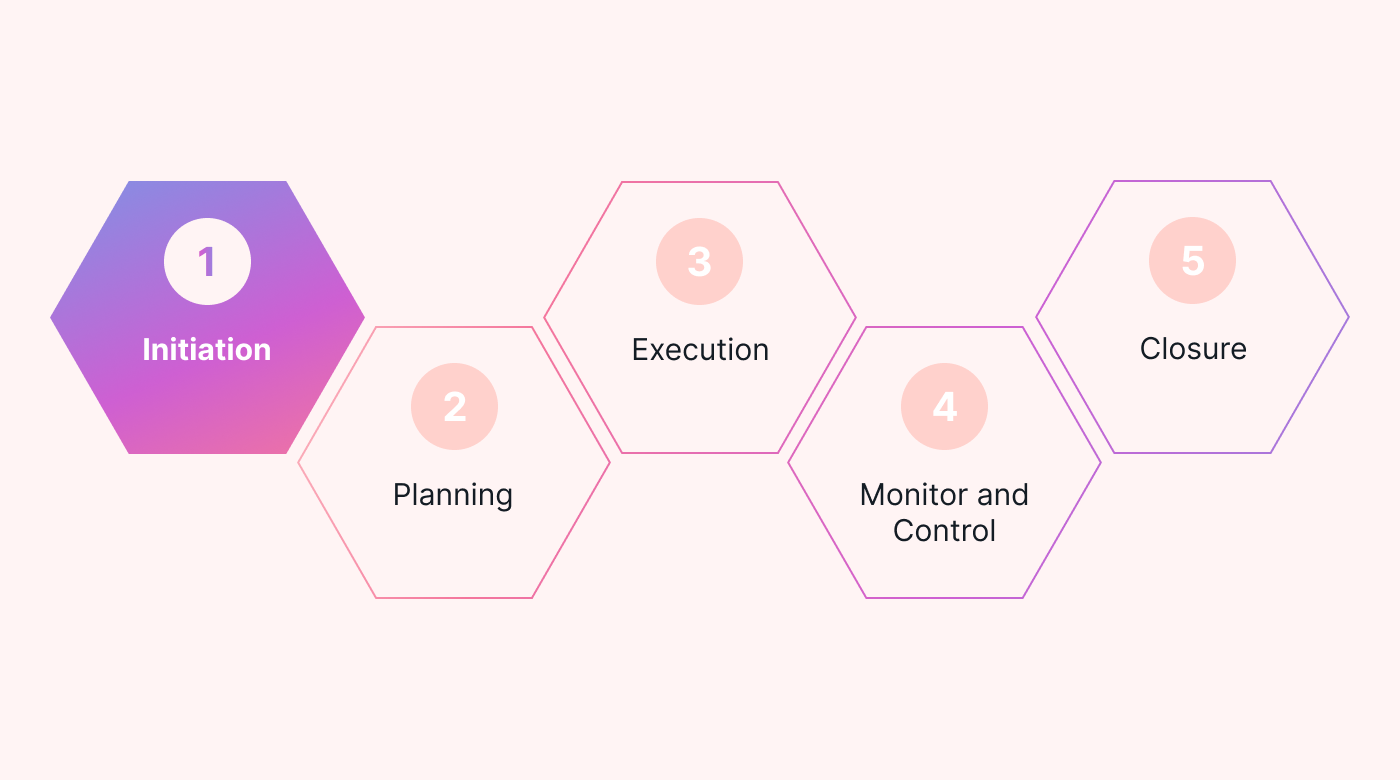 |
Unclear project objectives and deliverables
When project objectives aren't defined from the start, it confuses the entire project period. This will ripple throughout the project timeline, and tasks and efforts will always be misplaced rather than concerted to help deliver the project goal.
To solve this challenge, have a thorough kickoff session to outline the project objectives from the business case and make them SMART(Specific, Measurable, Achievable, Relevant, and Time-Bound).
Insufficient stakeholder engagement
Lack of stakeholder involvement during initiation often leads to unmet expectations and misalignment as the project cycle starts. All the relevant project stakeholders should be involved during initiation so that their inputs are captured, support declared, and assurance given that they are all on the same page moving forward.
To solve this, gather stakeholder input comprehensively from the start, set an effective communication plan, and prioritize and bucket your stakeholders to define who should know what clearly. This ensures alignment and a shared understanding of the project's goals right from the start.
Poor feasibility studies
Feasibility studies seek to answer one question — is this project viable?
When a project lacks a thorough viability assessment, it might progress with no clarity on the economic, operational, or technical feasibility. This leads to the pursuit of unachievable things, resulting in the wastage of resources, budget overruns, or other symptoms of project failure.
To solve this, run a comprehensive feasibility study involving the research team and subject matter experts. Simulate different scenarios and try to anticipate the outcome in each case.
Ideally, you should have a feasibility threshold that'll inform you of whether the project is worth pursuing or not. This is critical as it informs whether the project should progress to the planning stage or be shelved completely.
Challenges in the planning phase
When you get to the planning phase, some common challenges in project management include:
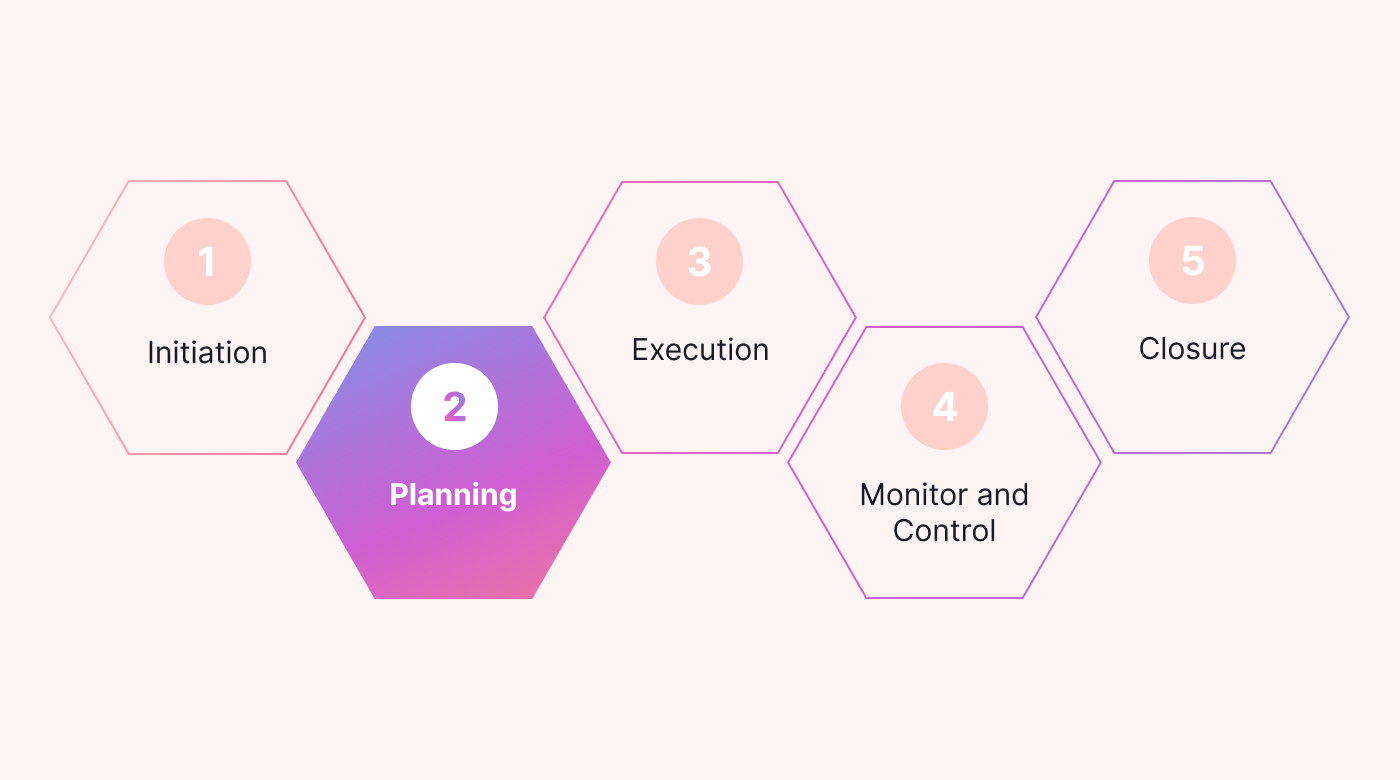 |
Poor risk analysis
Poor risk analysis will leave your project blinded from potential project risks that can lead to costly setbacks or even project failure. Consequently, without a robust risk identification and mitigation strategy, the project team will be ill-prepared to handle any emerging issues.
To avoid this, run a comprehensive risk assessment exercise, and prioritize the results based on likelihood and impact. Additionally, have a robust risk management exercise that clearly shows how to identify, prioritize, and manage risks during the project lifecycle.
Some risks are unforeseen, so try and foster a culture of proactive risk management. The framework defined during the planning stage shouldn't be final, and continuously update it as the project proceeds.
Improper resource estimation
Very few projects enjoy the benefit of unlimited resources. In fact, one of the main aims of project management is to deliver the goals with limited resources.
Key resources, including personnel, equipment, and funds should be accurately assessed and allocated to the different project elements.
To solve this, project managers should engage different stakeholders involved in the project and use data from previous projects to help identify what resources will be needed at what stage. Also, review how resources are allocated during the project cycle to ensure teams are adequately supported to deliver to the different milestones.
Proper resource estimation will help mitigate any risks associated with resource shortages.
Poor communication, time management, and scheduling
Poor communication structures, time management, and scheduling of tasks will make it hard to drive project processes and hinder coordination. Team members should all be aware of how they're expected to deliver their tasks and communicate with other members.
To avoid this, create a work breakdown structure to break down project deliverables into tasks. Assign the tasks to the right team members with deadlines and dependencies.
Do this with project management software like Motion, and make it a one-stop-shop for proper scheduling and time management.
Challenges in the execution phase
Common challenges that projects face during the execution phase are:
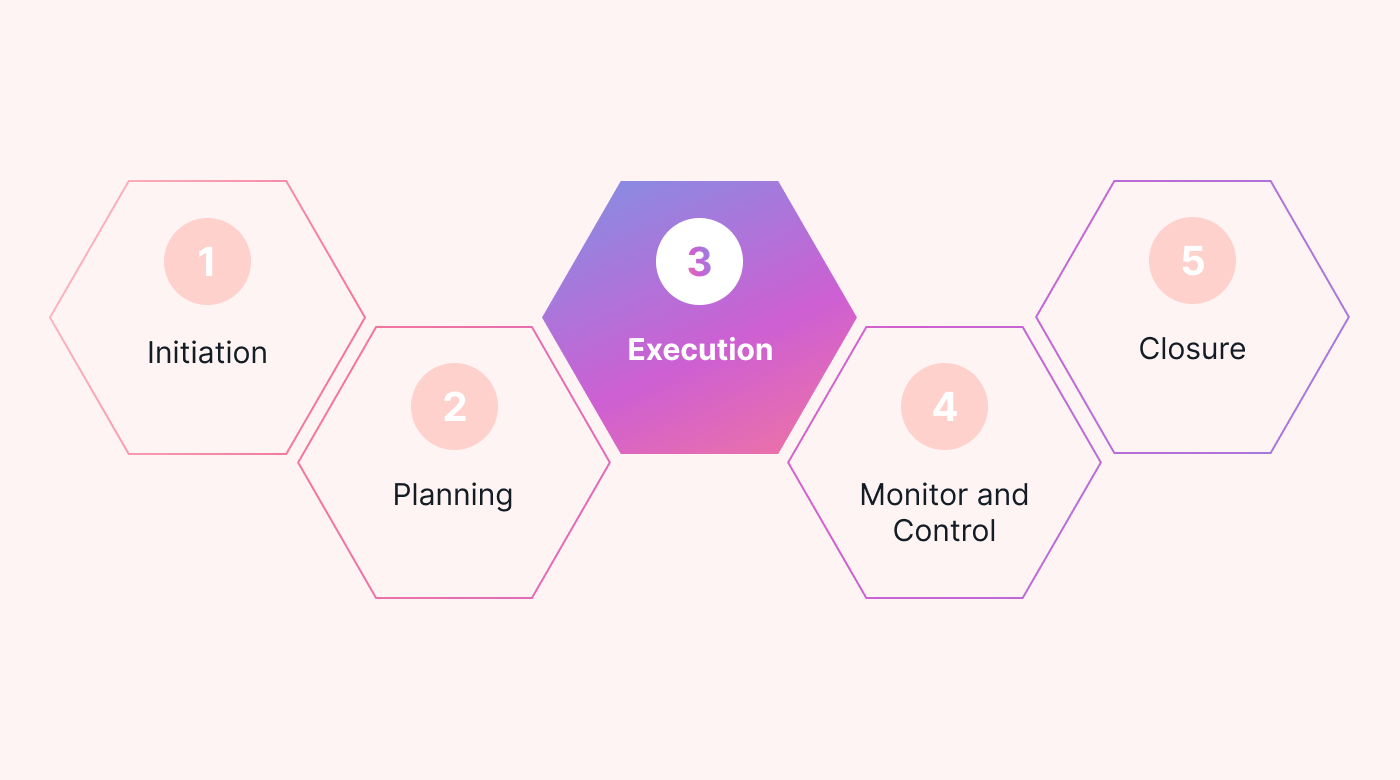 |
Scope creep
Scope creep is the unmanaged expansion of project requirements beyond the initially defined limits. It’s often caused by changing client requirements, or internal miscommunication. It can lead to misuse of resources, schedule delays, bloated costs, and loss of focus on the business goals of your project.
To avoid project scope creep during execution, create a proper change management process during the planning phase.
A formal change management process describes how to propose a change, how to assess its impact on the project, and how you’ll decide whether to accept or reject the change. The change process considers the necessary adjustments to schedule, cost, and resources.
Then you can use the change management process during execution to modify the scope in an orderly rather than “scope creepy” way. The idea here is to clearly define how to integrate any changes or additions to the requirements and adjust all the other affected aspects of the project to accommodate them.
Of course if you are using an Agile approach, changes in requirements can be introduced as the project proceeds, so the needs can change in a more flexible way. You can’t do that if your deliverable is a bridge or a bicycle, but you can if you're delivering product features that are useful in increments.
Whether using Agile or not, you should communicate any deviations from the original scope to key stakeholders, and more importantly, how they affect the deliverables and timelines that were agreed on during planning.
Poor quality control
The output of every project management stage should be continuously reviewed to ensure that quality standards are met.
In staying true to agile project management, don’t leave this to the end of the project cycle, but constantly inspect the output at every stage to ensure it meets the required standards.
Additionally, have clear quality standards defined from the end and put in place a rigorous User Acceptance Testing (UAT) framework to ensure deliverables work for your users or customers.
Poor team collaboration
Recently, 64% of businesses that focused on interpersonal skills reported high project management maturity, which effectively translates to more successful projects.
When teams don't work cohesively, it can lead to delays, conflicts, and a sense of disorganization. All these create a negative work environment which will demoralize team members, leaving them not committed to the cause.
To solve this, create a culture of open communication and respect among team members. Clearly define the roles and responsibilities of all members and encourage feedback. Also, address all conflicts objectively and get contributions and ideas from all members.
A robust project management tool like Motion helps foster team collaboration by making everything visible, organizing tasks effectively, and allowing team collaboration. It breaks down complex projects into individual tasks and clearly shows dependencies and progress, so team members can work in a cohesive manner.
Challenges in the monitor and control phase
Challenges experienced in the monitoring phase include:
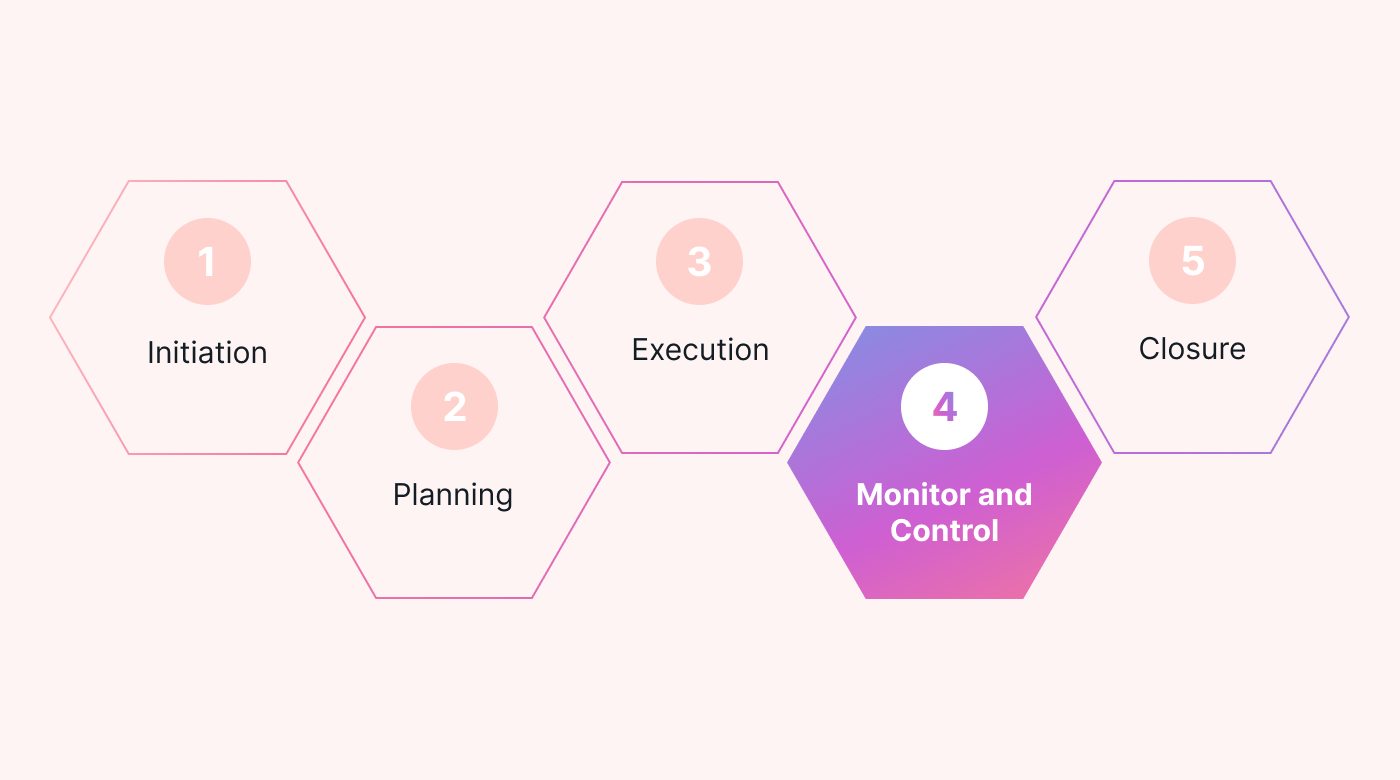 |
Lack of effective progress tracking
Poor progress tracking will leave team members and stakeholders lost on how far the project has gone and whether they are on track to deliver the plan or not.
Tracking schedule, cost and value progress, and making it clear to the team and other stakeholders how it’s going can keep the focus on forward motion. Taking a moment to celebrate milestones is a way to celebrate all the work that went into getting there.
Project progress should be assessed with the help of measurable KPIs that are defined during planning and monitored and controlled during this monitoring and control phase. Also, use defined measures of success that describe what success looks like, and what “done” for every stage of the project cycle and conduct thorough review and retrospective sessions.
Challenges in the closure phase
Finally, when the project is done, here are some challenges that might arise during the closure phase:
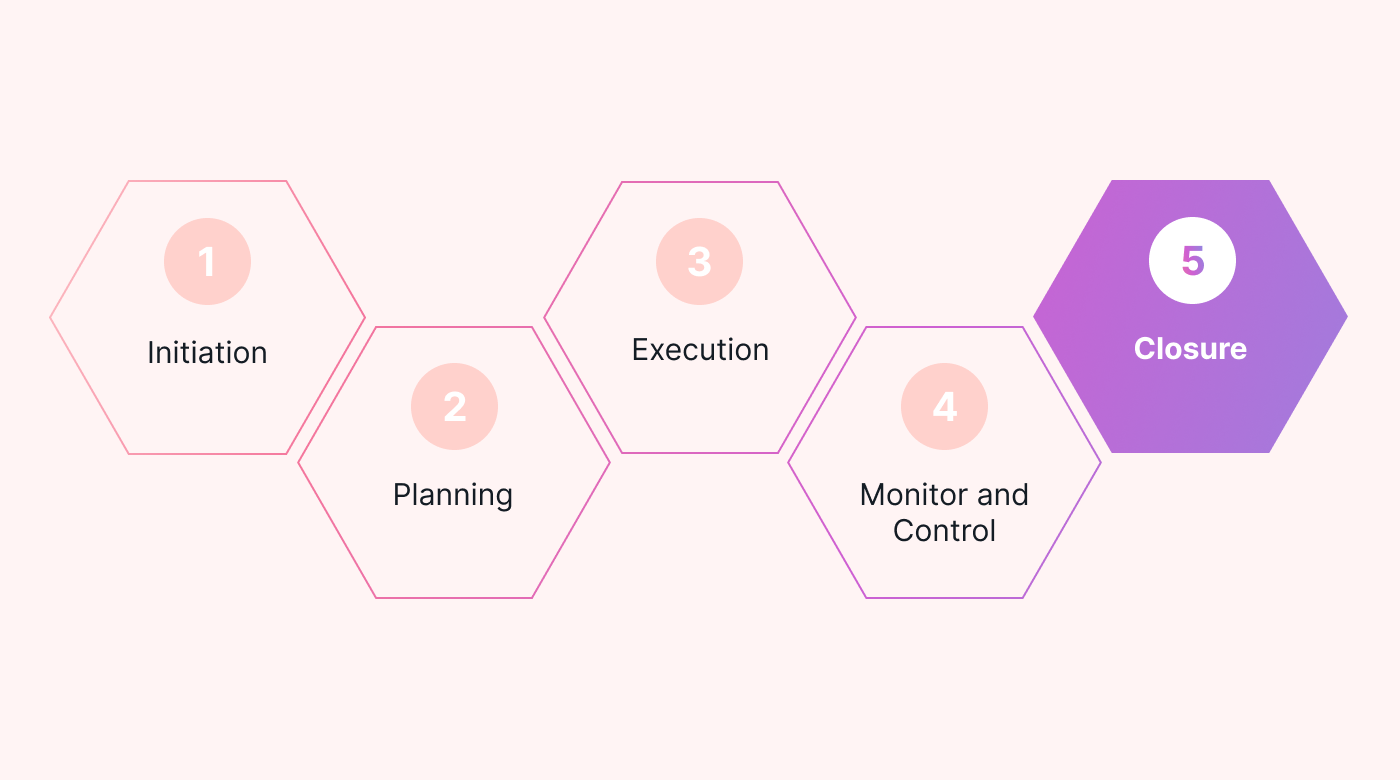 |
Insufficient documentation, reporting, and transition planning
Project teams often focus on delivering their tasks and forget about life after that. This can lead to a lack of proper documentation, reporting, and even transition planning if the output is to be transferred to a different user.
From the start, have a clear archiving process where all meetings, outcomes, and decisions are well captured for reference. Regular project reports should also be circulated to stakeholders to keep them abreast of what is happening.
If the users are independent from the project team, start planning for transition early on. In fact, transition planning should occur during the planning phase. Outline the steps required for any training and hand over and clearly define the obligations to the client team. Actual training and transition should happen during the execution phase.
Closure is when lessons learned and archiving should happen. And, don’t forget to plan what the project team members will work on next. The last challenge you want during project closure is your valuable team members sitting idle the day after the closing celebration!
Taking charge and propelling projects beyond challenges
Some of the top project management challenges have been discussed above, and make no mistake, they'll come. It’s a matter of “when” and not “if”, so you need to be prepared as a business owner.
Many of these challenges can be solved by having a robust project management tool that fosters collaboration, transparency, and efficient communication, like Motion.
Motion’s biggest impact is increased productivity because its AI project management and intelligent calendar are integrated. It serves up all your project and non-project work and your team's work based on resource availability, priorities, deadlines, and dependencies.
If you haven’t done it yet, check out Motion’s free trial and experience a seamless way to run all your projects.

